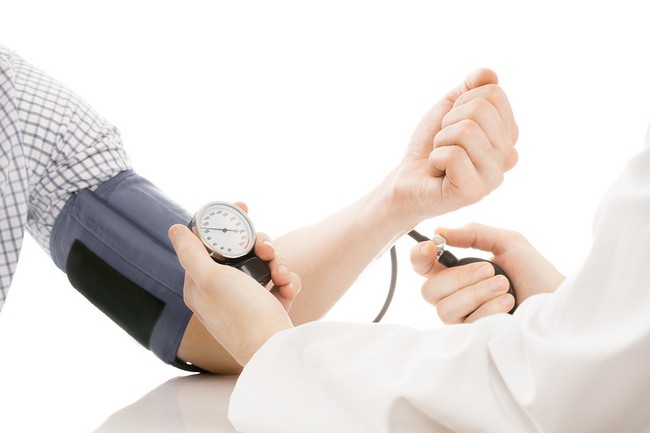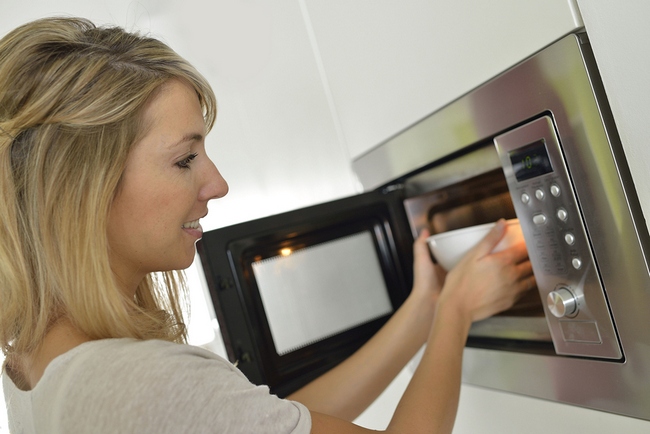- Make It Yourself Lavender Heart-Shaped Bath Bombs!
- 20 Things You Never Knew About “Down There”
- 12 Best Foods For Those Suffering From Arthritis Pain
- 12 Personal Hygiene Mistakes Almost Everyone Makes (Mom Never Told You About #4!)
- 15 Medicinal Plants And Herbs From The Cherokee People
- 12 Mind-Blowing Benefits Of Drinking Coconut Water During Pregnancy
- 12 Outstanding Winter Foods That Won’t Fatten You Up Like A Christmas Turkey
BPA Linked To Higher Blood Pressure And Heart Disease

Photo credit: bigstock.com
By now, many people have heard stories warning us about a type of chemical found in food packaging. A chemical known as BPA is used in almost every plastic bottle, container, and canned good in the grocery store. In this article, we’ll explore the health risks associated with BPA and how you can reduce your risk of exposure. It’s worth your reading!
What is BPA, and where is it found?
Bisphenol A, commonly referred to as “BPA,” is a chemical found in epoxy resins and polycarbonate plastics. It is frequently used in the production of plastic containers, like water bottles and bottle caps. It is also used as a lining material in metal food containers like such as soup and soda cans. BPA is also used in the manufacturing of some water supply lines, as well as certain kinds of paper, such as that used for printing receipts.
Why should you care?
Evidence suggests that BPAs can be linked to a variety of health problems. BPA is an endocrine disruptor, which means that it can interfere with hormones in the body, particularly with estrogen.
Serious health problems were previously thought to only occur after prolonged, consistent exposure to BPA. It was also thought that generally only young children were susceptible to any complications from BPA exposure. But new evidence has been uncovered linking even casual BPA exposure to health problems in adults and children.
Continue to Page 2

Photo credit: bigstock.com
What are the risks of BPA exposure?
In addition to hormonal problems, BPA exposure has been linked to:
Increased blood pressure. A study by the Seoul National University of Medicine was performed on volunteers over the age of 60, and it showed that BPA exposure not only led to an increase in blood pressure, but that such increases could happen much easier than once thought.
In the experiment, volunteers were instructed to drink soy milk from either BPA-lined cans, or from glass bottles. Soy milk was chosen because previous studies have shown that it does not cause an increase in blood pressure. The participants were also instructed to fast for eight hours before drinking the soy milk, and for two hours after before blood pressure was checked. This was to ensure there were no other factors that could cause any change in blood pressure.
The results gave some cause for concern. The group that drank soy milk from BPA-lined cans showed a 5 mg increase in systolic blood pressure after drinking the soy milk. To put that in perspective, a 20 mg increase in systolic blood pressure is all it takes to double one’s risk of cardiovascular disease.
BPA blood concentration. The higher the concentration of BPA in the bloodstream, the more likely someone is to encounter health problems. What’s truly alarming about the recent findings is how easy it is to accumulate dangerously high levels of BPA in the body.
The study mentioned above also measured the BPA blood concentration in the participants after drinking the soy milk. It was discovered that merely drinking two cans of soy milk from BPA-lined cans led to 1600 percent increase in BPA concentration.
The soy milk cans may have been an extreme case, but BPA is so ubiquitous in the manufacturing of cans, bottles, and plastic containers that people are almost assuredly exposing themselves to high concentrations of it without even knowing. A different study showed that simply eating soup from BPA-lined cans five days in a row led to a 1000 percent increase in blood concentration of BPA.
Continue to Page 3

Photo credit: bigstock
How You Can Reduce Your Risk Of BPA Exposure
BPA is such a widely used chemical it can seem hopeless trying to avoid it, but the good news is that there are some practical steps you can take which will significantly reduce your risks of any health problems.
Choose glass and ceramic containers and bottles instead of plastic. These substances do not contain BPA.
If you use a plastic bottle, avoid exposing it to heat or sunlight. Heat exposure causes BPA from the plastic bottle to seep into the liquid.
Eat fewer canned foods. This should be obvious, but how many of us just throw cans of beans into the grocery cart without thinking? Instead, buy the bagged beans (they’re much cheaper too). This goes for beverages as well. Choose drinks in glass bottles instead of cans whenever possible.
Avoid “microwavable” plastic. When a polycarbonate plastic container is marked “microwavable”, it simply means that the microwave oven’s heat won’t cause it to melt. BPAs can still leak into your food and contaminate it. Use a ceramic or glass container to microwave your food instead.
READ ALSO: BPA Free Plastics Contain Another More Dangerous Chemical
Choose the right baby bottles. Infants are more sensitive to the effects of BPA than adults, and unfortunately many baby bottles are made of BPA-containing plastic. A good rule of thumb is that hard, clear plastic bottles usually have BPA, while the soft, translucent and opaque bottles do not. Research the brand you want to purchase to make sure it is BPA-free. Many brands are labeled as such.
References:
































